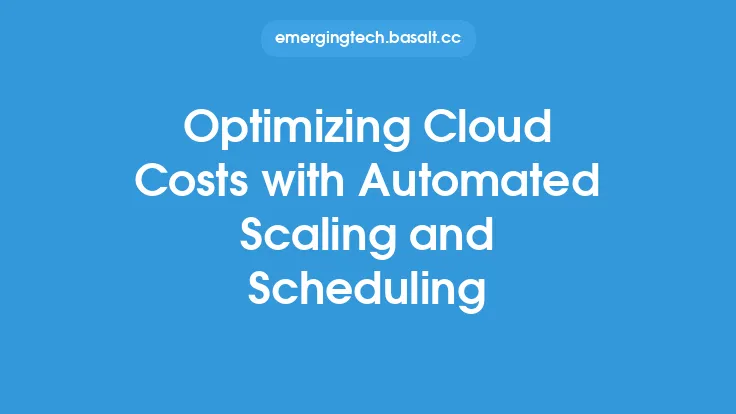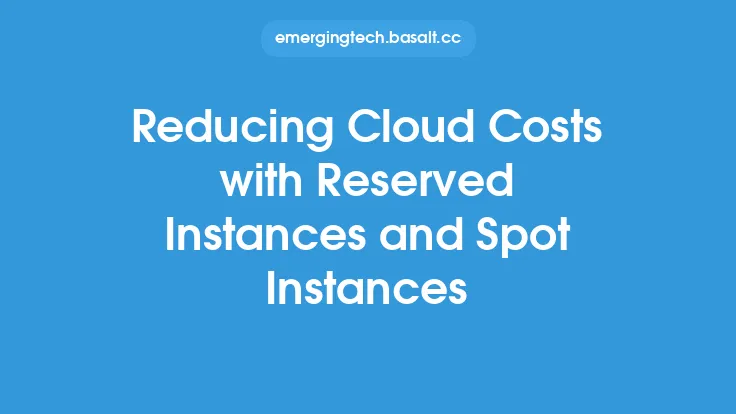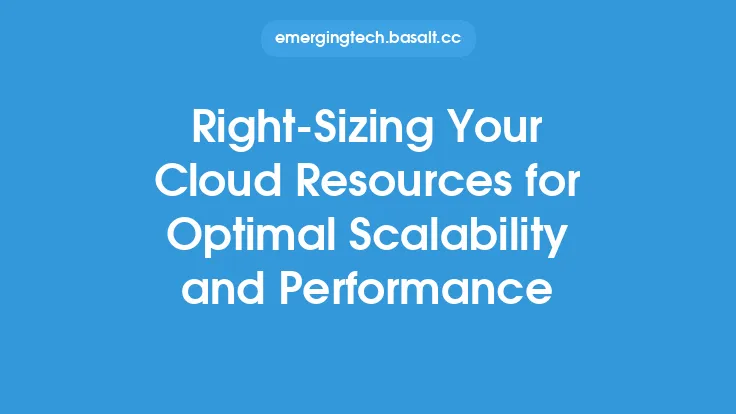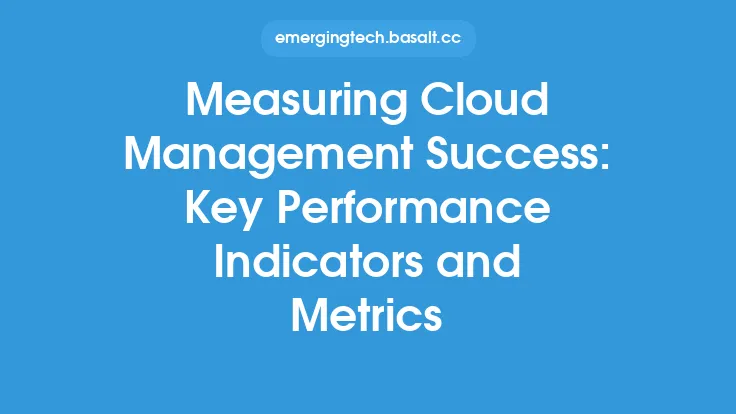Reducing cloud costs without sacrificing performance is a key challenge for many organizations. As cloud computing continues to grow in popularity, companies are looking for ways to optimize their cloud spend without compromising on the performance and scalability that the cloud provides. In this article, we will explore 10 ways to reduce cloud costs without sacrificing performance, providing a comprehensive guide for organizations looking to optimize their cloud spend.
Introduction to Cloud Cost Optimization
Cloud cost optimization is the process of analyzing and optimizing cloud computing costs to ensure that they are aligned with business objectives. It involves identifying areas of waste and inefficiency, and implementing strategies to reduce costs without compromising on performance. Cloud cost optimization is a critical aspect of cloud computing, as it enables organizations to maximize their return on investment (ROI) and achieve their business goals.
Right-Sizing Cloud Resources
One of the most effective ways to reduce cloud costs is to right-size cloud resources. This involves analyzing usage patterns and adjusting resource allocations to match actual demand. Right-sizing can be applied to various cloud resources, including compute instances, storage, and databases. By right-sizing cloud resources, organizations can avoid over-provisioning and reduce waste, resulting in significant cost savings.
Leveraging Cloud Pricing Models
Cloud pricing models can have a significant impact on cloud costs. Organizations should carefully evaluate their cloud pricing models and choose the one that best aligns with their business needs. For example, pay-as-you-go pricing models can be beneficial for organizations with variable workloads, while reserved instance pricing models can provide significant discounts for organizations with predictable workloads.
Optimizing Storage Costs
Storage costs can be a significant component of cloud costs. Organizations can optimize storage costs by using storage-optimized instances, leveraging tiered storage, and implementing data compression and deduplication. Additionally, organizations can use cloud-based storage services that provide automatic storage optimization, such as Amazon S3's Infrequent Access storage class.
Using Cloud-Native Services
Cloud-native services can provide significant cost savings compared to traditional cloud services. Cloud-native services, such as serverless computing and containerization, can help organizations reduce costs by eliminating the need for provisioning and managing infrastructure. Additionally, cloud-native services can provide automatic scaling and resource optimization, resulting in significant cost savings.
Implementing Auto-Scaling and Scheduling
Auto-scaling and scheduling can help organizations reduce cloud costs by automatically adjusting resource allocations based on demand. Auto-scaling involves dynamically adjusting the number of resources based on workload demand, while scheduling involves scheduling resources to run only during specific times. By implementing auto-scaling and scheduling, organizations can avoid over-provisioning and reduce waste, resulting in significant cost savings.
Leveraging Spot Instances and Low-Priority VMs
Spot instances and low-priority VMs can provide significant cost savings for organizations with flexible workloads. Spot instances involve bidding on unused cloud capacity, while low-priority VMs involve running workloads on unused cloud resources. By leveraging spot instances and low-priority VMs, organizations can reduce costs by up to 90% compared to traditional cloud instances.
Optimizing Network Costs
Network costs can be a significant component of cloud costs. Organizations can optimize network costs by using network-optimized instances, leveraging content delivery networks (CDNs), and implementing network traffic optimization. Additionally, organizations can use cloud-based network services that provide automatic network optimization, such as Amazon's AWS Transit Gateway.
Implementing Cloud Cost Governance
Cloud cost governance involves implementing policies and procedures to manage cloud costs. Organizations can implement cloud cost governance by establishing cloud cost centers, defining cloud cost policies, and implementing cloud cost monitoring and reporting. By implementing cloud cost governance, organizations can ensure that cloud costs are aligned with business objectives and that waste and inefficiency are minimized.
Using Cloud Cost Optimization Tools
Cloud cost optimization tools can provide significant assistance in optimizing cloud costs. These tools can help organizations analyze cloud usage, identify areas of waste and inefficiency, and implement optimization strategies. Additionally, cloud cost optimization tools can provide automated optimization, such as auto-scaling and scheduling, and can help organizations implement cloud cost governance. By using cloud cost optimization tools, organizations can simplify the cloud cost optimization process and achieve significant cost savings.
Conclusion
Reducing cloud costs without sacrificing performance is a key challenge for many organizations. By implementing the strategies outlined in this article, organizations can optimize their cloud spend and achieve significant cost savings. From right-sizing cloud resources to leveraging cloud-native services, there are many ways to reduce cloud costs without compromising on performance. By taking a proactive approach to cloud cost optimization, organizations can maximize their ROI and achieve their business goals.





